The VQ37VHR engine effortlessly blurs the lines between affordability, reliability, and performance. It’s arguably one of the most capable motors to ever roll out of Japan.
Nissan hit the nail on the head with the VQ35DE and VQ35HR engines. It’s no wonder why the 3.5 l V6 platform made it to the Ward’s Ten Best Engines list for ten consecutive years.
With each iteration of the VQ platform, engineering and technology only got better. As a result, the VQ37VHR is as good as it gets because it is the final form of the VQ line-up.
This engine is best known for powering cars like the Nissan 370z and the Infiniti G37 among others manufactured after 2008.
In this guide, we’ll discuss everything that makes this engine the go-to choice for countless enthusiasts in the tuner community. That’s not all, we’ll also go into the tech specs and see what makes this engine so reliable.
Nissan VQ37VHR Engine Specs
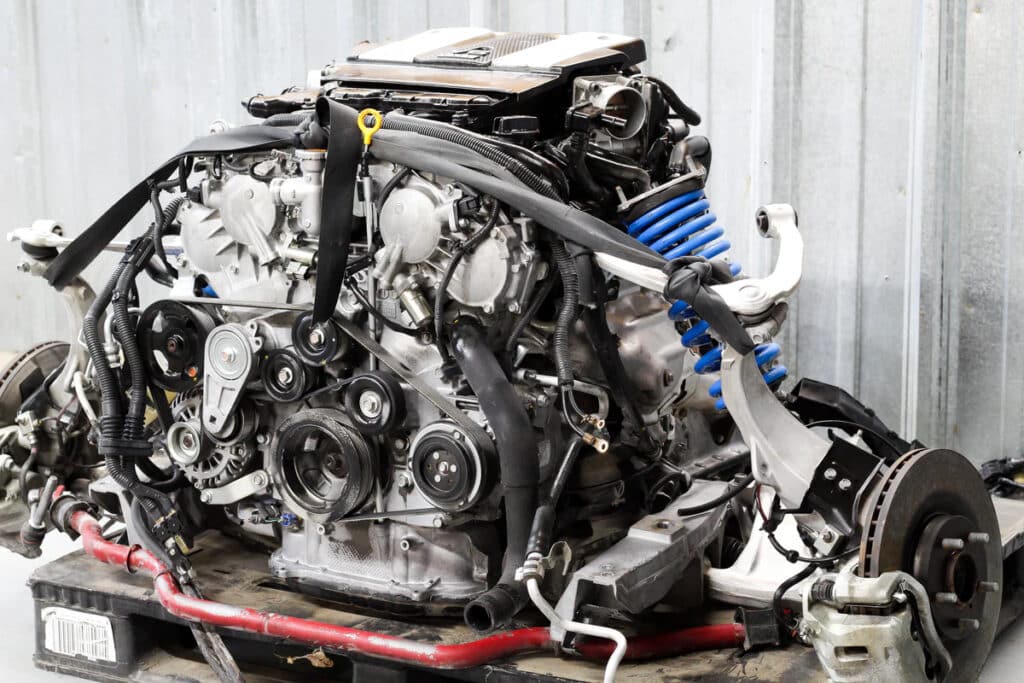
Engine code: VQ37VHR
Production years: 2007 – present
Layout: V6
Valvetrain: DOHC, four valves per cylinder, VVEL + CVTC
Displacement: 3.7 l
Fuel system: Electronic fuel injection
Cylinder bore: 95.5 mm
Piston stroke: 86 mm
Compression ratio: 11:1
Horsepower: 330 hp @ 7000 rpm | 333 hp @ 7000 rpm | 355 hp @ 7000 rpm
Torque specs: 266 lb-ft @ 5200 rpm | 268 lb-ft @ 5200 rpm | 269 lb-ft @ 5200 rpm
Redline: 7600 rpm
Firing order: 1-2-3-4-5-6
Cylinder block material: Cast aluminum
Cylinder head material: Cast aluminum
Nissan has made a lot of great engines over the years some of these include:
But their VQ lineup has got to be one of their most successful endeavors. The VQ37VHR powered several well-known Nissan and Infiniti cars such as:
- Nissan 370z
- Infiniti QX50 (EX37)
- Infiniti QX70 (FX37)
- Infiniti Q50
- Infiniti G37/Q40/Q60
- Infiniti Q70 (M37)/Nissan Fuga/Mitsubishi Proudia
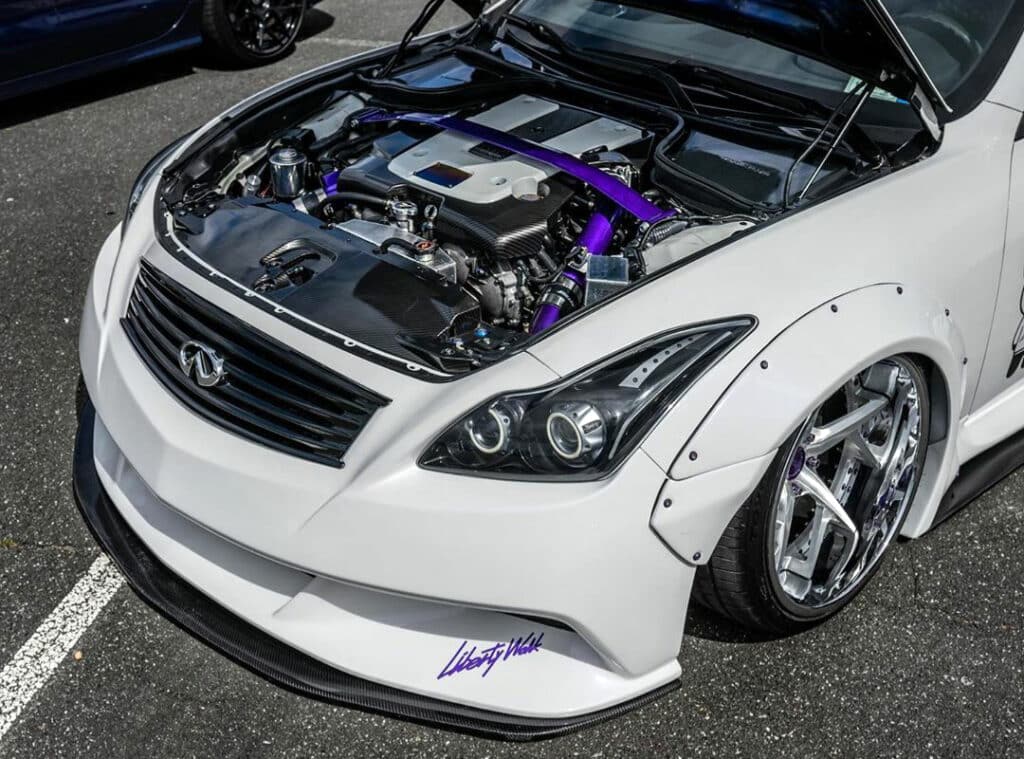
Owing to the stability and cross-platform compatibility of this engine, it’s a very popular swap option for older Silvias and Z-cars from the past.
The VQ37 was quite a step above the older VQ35 considering the 44 hp increase in contrast with a meager 0.2% bump in displacement. That’s extremely efficient.
Even though it’s an oversquare engine — where the bore is larger than the stroke, it has plenty of torque. Oversquare engines typically favor top-end performance by sacrificing some of the low-end torque.
This means that a lightly tuned 370z equipped with this engine can take on the likes of Mustangs, Camaros, and Challengers.
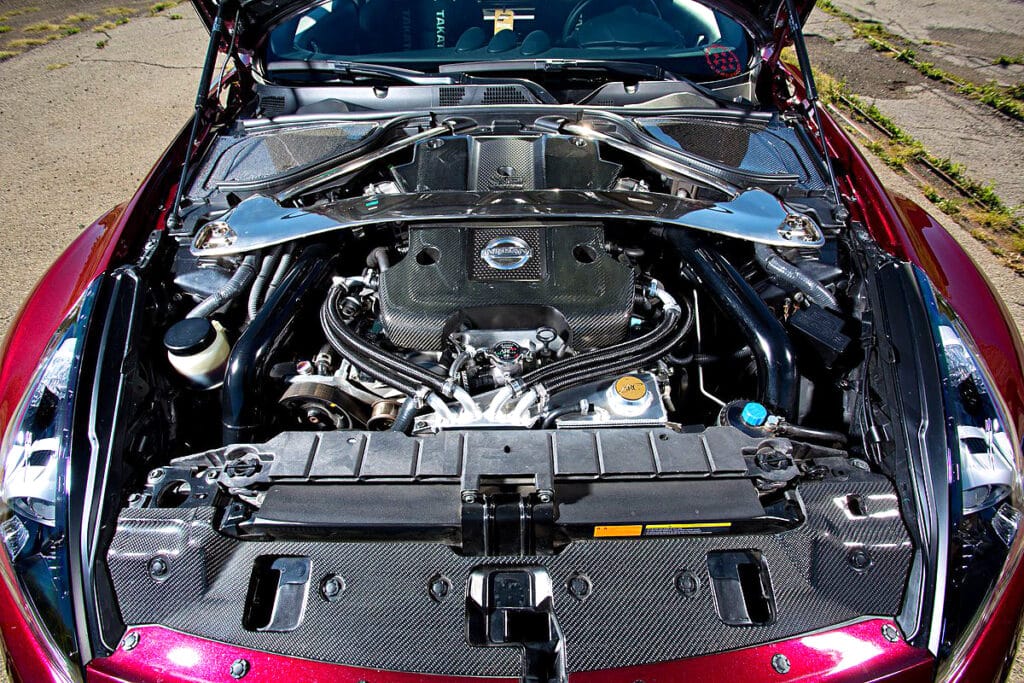
What Does VQ37VHR Stand For?
It doesn’t really roll off the tongue, does it? Here’s what Nissan’s engine code stands for:
- VQ: Engine Family
- 37: 3.7 Liter Displacement
- V: VVEL (Variable Valve Event and Lift)
- HR: High Response and High Revolution
VQ37VHR Construction
Keeping true to the VQ heritage, the VQ37VHR boasts a lightweight all-aluminum engine block and head for optimum weight reduction.
It has an identical cylinder bore configuration as the VQ35, but with taller cylinder blocks and a larger stroke — that’s where the increased displacement of 3.5 l to 3.7 l comes from.
Additionally, it comes with lighter pistons and connecting rods compared to the previous iterations of the VQ motor.
The cylinder bore and piston stroke measure 95.5 mm and 86.0 mm respectively and it has a healthy 11:1 compression ratio.
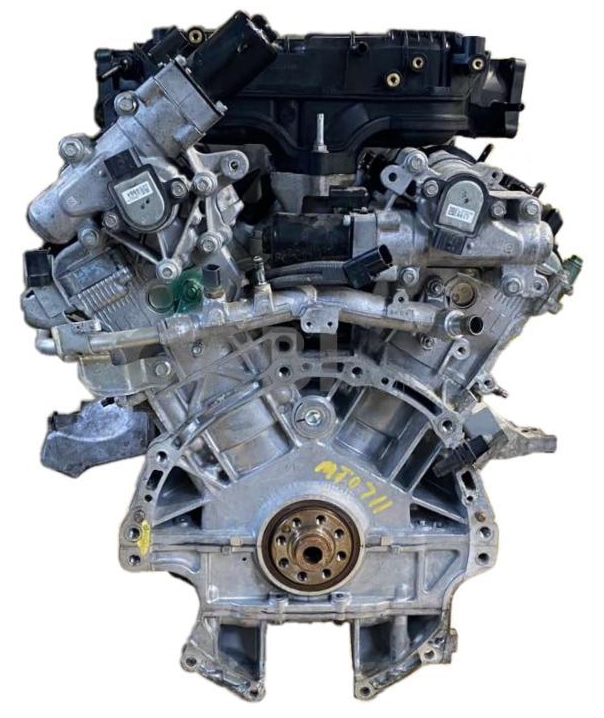
The length of the connecting rod is 149.5 mm. The diameter of the intake valve and exhaust valves measure 36.6 mm and 30.2 mm respectively.
Just like the previous VQ engines, the VQ37 has a dual intake system, which means it has two air filters, two intake tubes, and dual throttle bodies, which makes it extremely efficient and provides excellent throttle response.
That’s partly the reason why this engine responds really well to intake and exhaust system upgrades.
But despite the same dual-intake system design, both the intake and exhaust camshafts get a significant upgrade on the VQ37VHR engine.
The cast aluminum dual overhead cams with 4 valves per cylinder utilize Nissan’s VVEL system on the exhaust side and CVTC on the exhaust side. Put together, this technology rivals BMW’s Valvetronic and Honda’s i-VTEC.
VVEL is short for variable valve event and lift. As opposed to traditional camshafts that use egg-shaped rotating lobes to open and close the intake valve, VVEL involves the use of a link-style rocker arm connected to a coma-shaped lobe that rotates 90° back and forth.
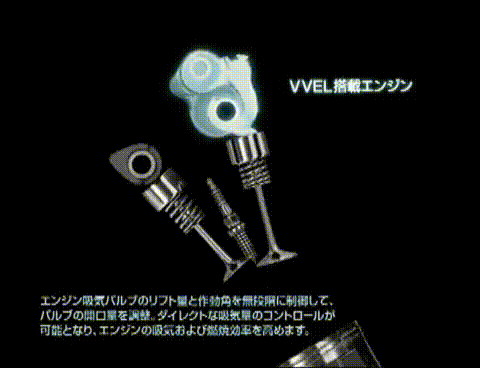
This makes it possible for the intake valve to double up as a throttle control device since it can precisely control the event and lift, eliminating the need for throttle bodies.
As a result, the throttle bodies remain wide open at all times, regardless of your throttle position. Conventional engines with fixed cams rely on the butterfly valve in the throttle body to regulate the airflow to the engine.
This valve only opens when you depress your throttle and the operation is mechanical, which means there’s a slight delay between you depressing the throttle and air entering the combustion chamber.
But with VVEL the throttle body is always open, and the intake charge is entirely controlled by the intake valve, effectively eliminating the delay and improving throttle response.
One advantage is that you get a flat torque curve that outperforms almost every other V6 in the VQ37VHR category. Another benefit is that of reduced intake camshaft wear.
We’ve explained this in more detail in our article that talks about choosing the best Nissan 370z headers.
That was the intake camshaft side. On the exhaust side, you get CVTC — continuous variable timing control. Unlike VVEL, it only controls the timing of the exhaust camshaft, but it doesn’t control the valve duration or lift.
Common Issues With the VQ37VHR Engines
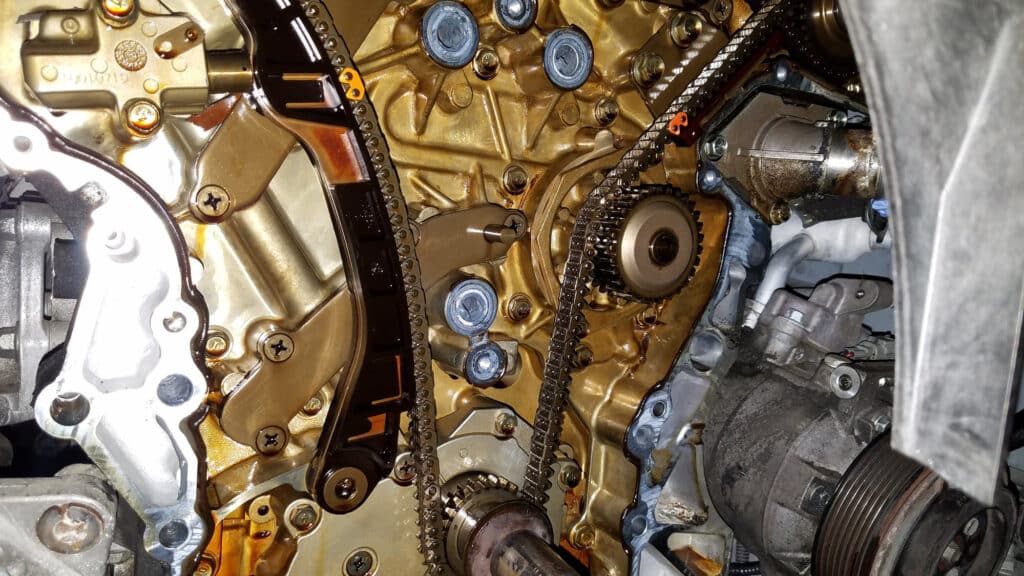
No engine is truly flawless. As great as the VQ37VHR is, it does have some common problems that crop up every now and then, especially in the pre-2012 engines.
Although, these aren’t very serious issues that will burn a hole in your wallet; fixing them is quite straightforward, and we don’t see them as deal breakers by any means.
But that’s if you know what to look for. If you ignore error codes, check engine lights, and any abnormalities, it can lead to expensive repair work. And that’s true for all engines.
Oil Gallery Gasket Failure
This is arguably one of the most notorious issues that plague the otherwise fantastic VQ37VHR engine. If it goes undiagnosed or neglected, it will cause the motor to fail.
Most modern-day engines use something called oil galleries. These are carved-out passages in the engine that circulate oil through hard-to-reach spots that have high heat and tight tolerances.
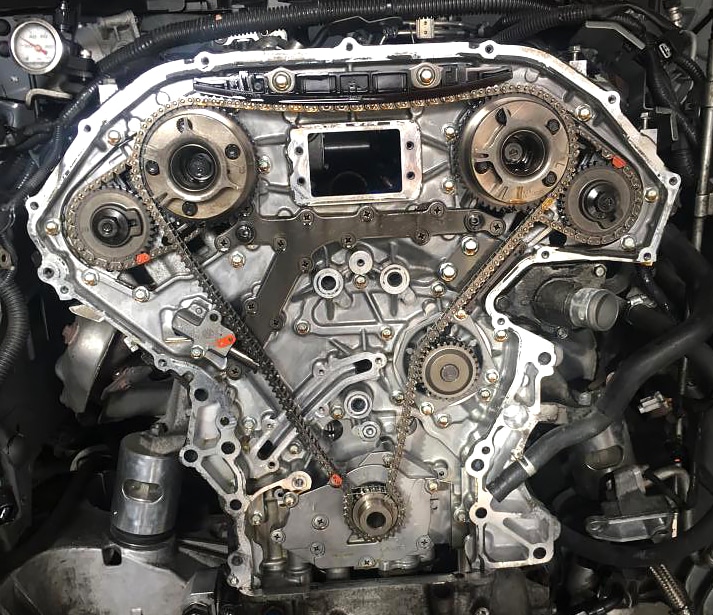
With the VQ37VHR, the galleries sit right between the timing cover. There are two T and L-shaped gaskets that seal the timing cover and the block.
Pre-2013 engines got cheap, low-quality oil gallery gaskets that were extremely prone to failing.
Nissan did revise the poor gasket design, but if you’re on the lookout for an Infiniti G37 or Nissan 370z that was manufactured before 2013, then this is something to be aware of.
When these gaskets fail, it causes an immediate and significant drop in oil pressure, which is never a good thing. And the tricky part is that it can happen without any prior warning.
Cars powered by this engine will usually go into limp mode and throw P0011 and P0021 error codes. But if that doesn’t happen and you continue to drive with a thirsty engine, it could ruin the motor entirely.
To make matters worse, the chipped-off pieces of the gaskets can land up in the oil pan and partially block off the oil pick-up tube.
We recommend looking into aftermarket gaskets, like the EPS tuning oil gallery gasket and hardware kit.
Water Pump Failure
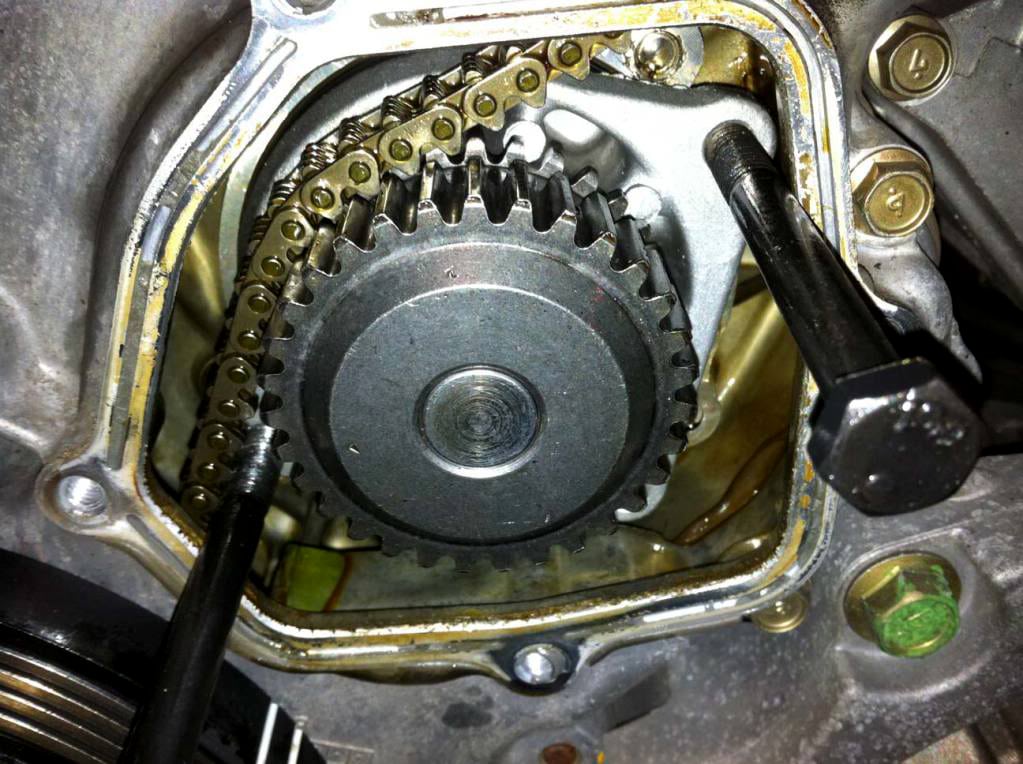
Water pump failure is commonly a maintenance issue rather than a problem that’s unique to the VQ37VHR engine.
The water pump’s job is to circulate coolant through the radiator and the engine to dissipate heat. It is able to do this because it’s highly pressurized.
As a result, its internal components are under constant stress and are prone to failure.
It’s the internal seals that are most susceptible to failure. When that inevitably happens, the coolant goes right past them and leaks out of the weep hole — a failsafe designed to indicate that the water pump is going bad.
So if you notice any coolant leaks under your car, gauge where they’re coming from, and look for the P0217 error code.
Replacing your water pump is essential if this happens, otherwise, it can cause the coolant and oil to mix, which can cause serious damage to your engine.
The VQ37VHR water pump usually fails when the engine crosses 100k miles. Overheating is a clear tell-tale sign of this issue.
Fuel Starvation
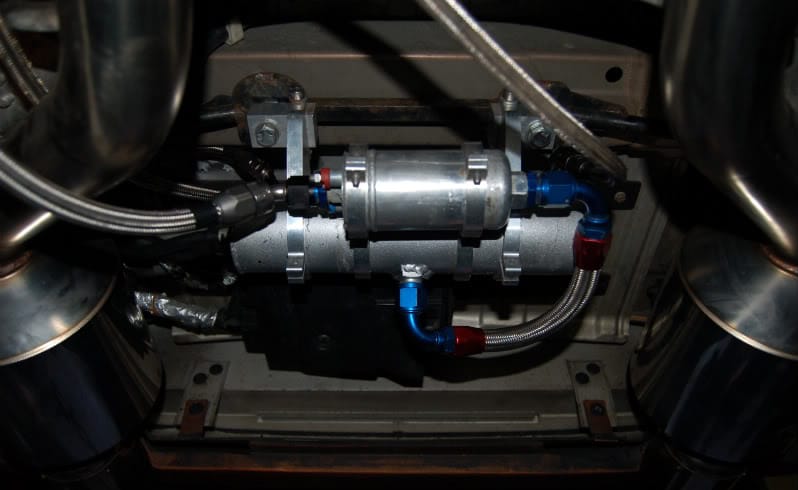
Early model year 370zs are known to suffer from fuel starvation when pushed hard, typically at the track or after a long drift session.
This is an issue that arises during high lateral G turns, when the fuel in the tank shifts towards one side, resulting in a momentary loss of fuel supply.
As a result, the fuel line develops air pockets which cause unexpected juddering and stalling. The best solution for this problem is to install a fuel surge tank.
Concluding Thoughts

Despite the few problems this engine comes with, the pros far outweigh the cons. You get exceptional aftermarket support, the VQ community is enormous, parts and upgrades are plentiful, and the tuning potential is near endless.
It’s true that you can’t get a ton of power out of the VQ37VHR when it’s naturally aspirated. We recommend taking the forced induction route by installing a turbocharger or supercharger.
What are your thoughts on this motor? Let us know by leaving a comment below!
If you enjoyed this article, please do share it on Reddit, Facebook, or any other online communities that you like. We appreciate your support.


4 comments
It’s a nice car, the 370z, it’s too slow from the factory. If only they gave it the needed the 50hp more, then you wouldn’t have to bother with an aftermarket turbo kit.
Is the VQ37VHR direct or port injected?
Port
It is port injected. No worries about carboned up intake valves.